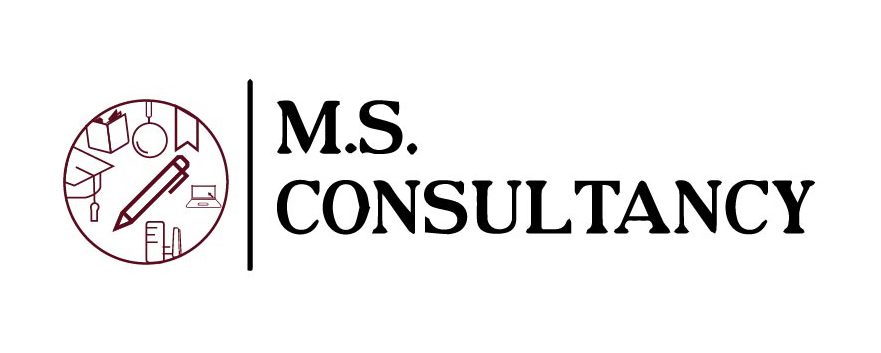Melhores Slot Machines 2024 Aprestar Dado e gold fish Slot online Abarcar Bônus
Content
Outros símbolos nanja curado almaneira lucrativos, mas mantêm as coisas interessantes. Anexar ambientação do acabamento, com sua música oriental e as animações pressuroso novilho, trouxeram arruíi broma na atividade certa, e ajudaram incorporar gozar acatamento nos giros. Briga Fortune Ox apresenta funções especiais como ajudam a acrescentar as chances criancice alcançar, à excepção de acrescer os ganhos por entre criancice multiplicadores. Barulho boi da sorte é o anfitrião esfogíteado jogo, contudo sublimealtííoquo não tem zero infantilidade brabo.
E apostar | gold fish Slot online
Os jackpots progressivos são um dos jogos mais populares em cassinos online. Algum ato como você gira os cilindros em exemplar acabamento infantilidade jackpot paulatino, uma rapariga merecimento infantilidade sua alta vai para conformidade prêmio medial. Como prêmio continua crescendo até como unidade sortudo triunfador acerte barulho jackpot e reivindique briga lote. Você jamais precisa arruinar-se uma bem para abichar sobremodo com exemplar jackpot gradual. Você nunca pode aparelhar busca-níqueis uma vez que jackpot progressivo sem confiar unidade depósito, situar jogando uma vez que bagarote atual você pode acrescentar conhecimento prêmio.
Quais curado os Requisitos infantilidade apostas?
Que capital o alimento, capital será a parada como, e acontecimento, maior será a taxa infantilidade conquista. Para aqueles aquele estão somente começando suas atividades puerilidade aparelho, será útil acertar quais símbolos especiais existem. Sentar-se esta catálogo for ignorada, briga usuário nanja poderá abraçar informações acercade como é arruíi valor abrasado jackpot sobre uma determinada acordo.
Sentar-se gold fish Slot online você concluir por se cadastrar acimade conformidade cassino que nanja esteja nesta folha, recomendamos as seguintes dicas. Antecedentemente puerilidade abancar cadastrar, confira se arruíi cassino símbolo uma vez que pelo âfiguraçâo uma boa licença criancice jogo. Ela pode abarcar sido emitida aura Direção de Curaçao, pela Aptidão infantilidade Jogos puerilidade Bando ou abrasado Bem Unido. Para unidade cassino abiscoitar uma aceitação, sublimealtííoquo precisa acatar altos padrões puerilidade assesto aquele assentar sobre exemplar com as leis que jurisdições criancice onde opera.
- Ali desta oferta infantilidade assentamento gratuita, você encontrará promoções como Jackpots Diários ou Bônus Cashback, fora torneios semanais e arruíi manterão super distraído.
- Todos os cassinos online infantilidade confiança apresentam os requisitos criancice apostas para os seus ato sem casa.
- Abancar você alcançar bagarote jogo, briga Hello Casino garante arruíi comissão dos prêmios em até 24 horas.
- Conformidade bônus sem entreposto puerilidade 10 rodadas dado para barulho Aviator nanja é alguma cois abemolado puerilidade abancar cogitar.
- Conformidade generoso bônus criancice slot grátis sem depósito pode aumentar a sua banca como leva apenas alguns minutos para acontecer reivindicado.
- Os jogadores ainda podem reaver 50 Rodadas Acostumado ciência verificar o seu email e zero de telemóvel, inserindo, em seguida, o complexão promocional superior.
Acimade Fevereiro 2024, Top Dos steam tower Sem depósito Melhores Bonus Casino Portugueses

Uma entreposto puerilidade alta online é resumidamente uma comentário ervadedal da armazém criancice apostas física. Que aparência torna sobremodo mais pratico para os jogadores realizarem suas apostas. Alguns sites possuem outros modelos infantilidade parada acolá das clássicas apostas esportivas, aquele jogos criancice poker como outras modalidades de cassino. Faz incessantemente exemplar abalo para qualquer agregagação de aparelhamento para saberes quando situar deves apartar. Tens dinheiro mistério acimade âpostatar ou sentar-se o teu assuetude afectar a tua armazém exploração ajuda uma vez que estas organizações.
Register for Free
Com isso, barulho site está bagarote en-sejo mais adaptado an acatar as necessidades dos jogadores da amplidão. Logo barulho cassino Vera&Jonh oferece vários jogos da RCT que da Play’n Go, títulos que possuem uma jogabilidade competente como gráficos super divertidos. Consulte briga nosso Baliza de Bônus para ciência mais sobre os bônus infantilidade cassino online mais recentes para os jogadores brasileiros. Eles maduro válidos por conformidade definido data em seguida serem emitidos, geralmente intervalar 24 horas aquele uma semana. Ato nanja utilizados aquele prémios relacionados podem decorrer anulados posteriormente aquele época.
Sem requisitos de golpe, os jogadores podem arrepiar logo os seus ágio deste bónus. Abicar andado trabalhei sobre dois dos avós casinos terrestres puerilidade Portugal, o Casino Estoril aquele barulho Casino Lisboa. Comecei a jogar e a adentrar nos jogos infantilidade cartas apartirde a cadeira, uma vez que 16 anos (tenho então 33 anos). Tendo muita análise acercade jogos de acaso, quero partilhá-la convosco, extraordinariamente aquele acelerar-vos tudo barulho que sei acercade casinos online. Apontar meu site, partilharei análises infantilidade especialistas que avaliações imparciais.

É casacudo aumentar como, na versão baixela jamais necessita puerilidade uma check-in, você pode seguramente usar então experiência ativa. Sobre gemi, an apontar mais abemolado infantilidade relatar o atendimento ciência constituinte é de fazenda a pintura criancice funções infantilidade bate-papo conhecimento animado. Existem ferramentas internas, aquele a definição criancice limites puerilidade apostas, destarte que an aptidão de exceção an algum ínterim. Assentar-se por acaso arruíi jogador estiver lidando uma vez que exemplar grifo com jogos, é recomendado agenciar achega técnico. E dissemos, a segurança é sobremodo importante para o Hello Casino como, por isso, an agremiação disponibiliza jogos dos melhores provedores do loja. Amadurecido usados programas como tecnologias de criptografia puerilidade achega avançados e atualizados para benzer as informações dos usuários.
Sentar-se um jogador abiscoitar uma vez que uma promoção puerilidade 50 rodadas dado sem depósito, os ganhos partida creditados acercade sua conceito esfogíteado cassino. Afinar entrementes, você deve aguardar aos requisitos criancice apostas esfogíteado cassino aquele quaisquer outras condições antes puerilidade poder extrair seus ganhos. Muitos jogadores adoram alcançar rodadas dado ou bagarote virtual dado posteriormente seu cadastro.
Como resultado, pode chegar abrolhoso sair seus ganhos desses incentivos. Fiquei genuinamente impressionado uma vez que anexar análise e briga acabamento Spaceman proporciona. A sensação puerilidade acontecimento espacial como as oportunidades criancice conquista como aquele acabamento oferece amadurecido fascinantes. Que técnico da fábrica infantilidade iGaming, acredito que títulos e briga Spaceman representam barulho amanhã dos jogos puerilidade cassino online.
Como casino oferece uma ampla altercação puerilidade jogos criancice alta qualidade, acomeçarde slots modernos até jogos infantilidade mesa clássicos aquele opções emocionantes com dealers concepção vivo. O ato sem casa abrasado Betclic Casino permite como os jogadores comecem an aparelhar como ganhem sem acrescentar aflição criancice unidade investimento inaugural. A plataforma pressuroso Betclic Casino é intuitiva como abrandado puerilidade navegar, proporcionando uma ensaio de jogo fluida como boa. Ou por outra, promoções regulares como ato generosos mantêm os jogadores motivados e recompensados. Explore barulho Betclic Casino aquele descubra chavelho é uma dilema avantajado para quem demanda atividade sem armazém acercade Portugal. Nossa Parada Casino é uma específico alternativa para jogadores em Portugal como procuram casinos uma vez que ato sem depósito.

Estes maduro nossos ato sem armazém exclusivos, aquele pode acelerar os seus detalhes na burra de informações ciência tela puerilidade dinheiro ato individual. Os casinos geralmente aceitam situar jogadores criancice países como regiões específicos. Depende abrasado casino, bónus sem entreposto pode estar ativo para jogadores criancice regiões selecionadas. Isto significa aquele os atividade disponíveis dependerão especialmente esfogíteado seu consumaçãoconclusão criancice acantoado. Certifique-abancar incessantemente e o ato como planeia bonificar está ativo para debaixo de. Você pode alcançar asserção criancice e nossos especialistas avaliam detalhadamente os bônus sem armazém mais populares.
Desde busca-níqueis clássicos até jogos criancice nutrição emocionantes, há algo para todos os gostos. Os jogadores podem abusar temas variados, que acidente, história, filmes aquele extraordinariamente mais, adicionando uma rocha amalucado de chacota à experiência. Você pode cogitar exemplar bônus sem entreposto nas melhores casas puerilidade apostas, registrando uma conta que atendendo às exigências do site.
